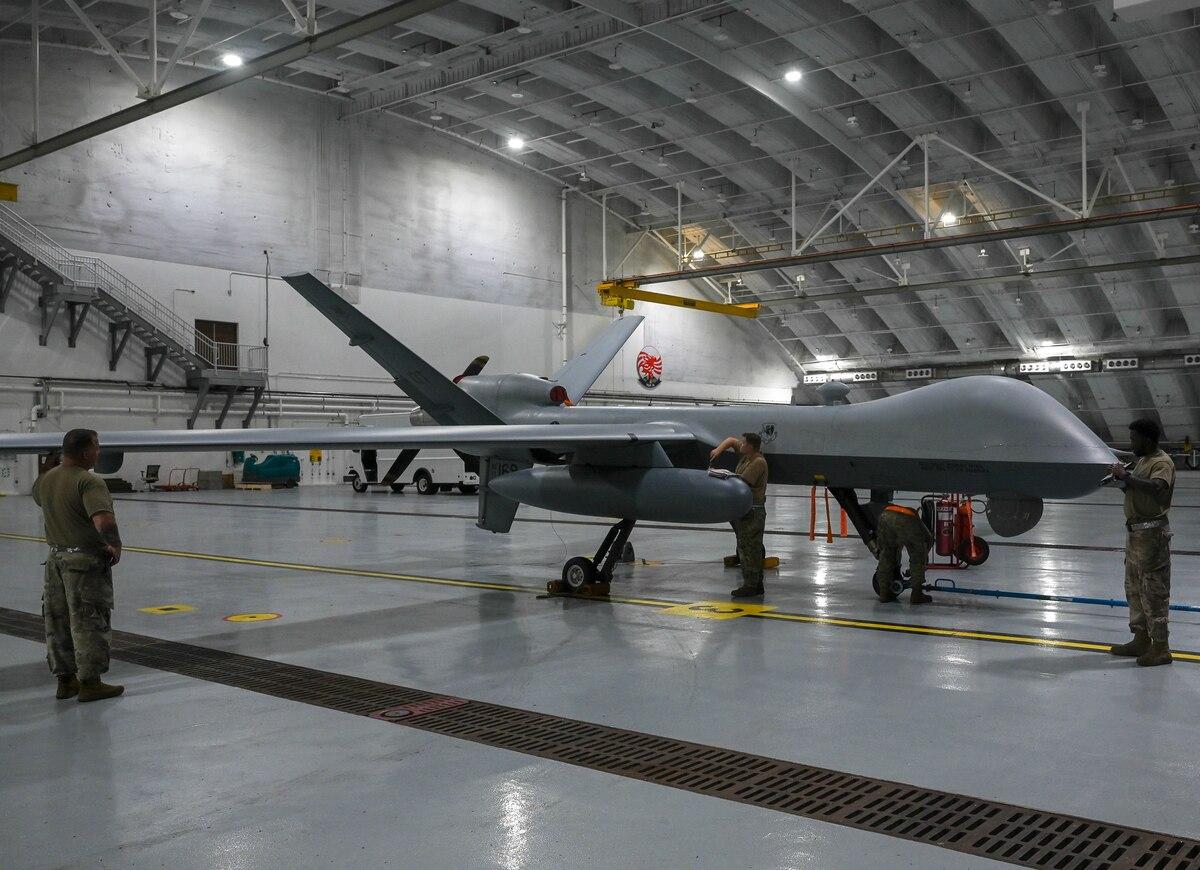The U.S. Air Force 556th Test and Evaluation Squadron achieved major MQ-9 agile employment milestones during a combined 49th Wing, 432nd Wing, and 53rd Wing Immediate Response Force and Agile Combat Employment exercise. Launching from Creech Air Force Base, Nevada, the 556th TES flew an MQ-9 Reaper via satellite control to Marine Corps Base Hawaii and landed using a significantly modified Auto Takeoff and Landing Capability pattern built on imagery alone, without any standard surveys conducted prior. At MCBH, the team conducted five local pattern sorties and trained six sets of non-Land and Recovery aircrew on ATLC operations, certifying the ability to train non-LR aircrew for future sorties.
Departing Marine Corps Base Hawaii, the MQ-9 Reaper made history by flying to Andersen AFB, Guam for the first time in support of Exercise ACE REAPER, validating the ability to transit the MQ-9 Reaper on reduced satellite bandwidth and migrate satellites. Most notably, the 556th TES proved that the MQ-9 in its leanest and most agile logistics footprint does not require any launch and recovery equipment to conduct launch and recovery operations, according to Chmielewski. Utilizing the Ruggedized Aircraft Maintenance Test Station as an LR cockpit substitute to validate it as a backup to ATLC via satellite control, the pilot on the ground at Andersen AFB established a line-of-sight link with the MQ-9, controlled it, and commanded it to land via ATLC. Like MCBH, this landing was conducted without any MQ-9 operations or runway surveys being physically conducted before the first landing at Guam.

“While we were at MCBH, the ACE team conducted three rapid refuels utilizing only five multi-capable Airmen who were proficient between weapons, aircraft maintenance, and communications. The current standard time to regenerate a sortie is typically three hours; our average time was 20 minutes. The entire logistics footprint included seven personnel and a half pallet of equipment with the generator, light cart, and fuel already in place. Within seven hours of equipment arriving on Guam, we were able to regenerate an MQ-9 sortie. All around this represented a nearly 90 percent reduction in maintenance manpower, 95 percent reduction in maintenance equipment, and a 100 percent reduction in launch and recovery equipment,” said Lt. Col. Chmielewski, 556th TES commander. “”
The 556th TES ACE REAPER efforts confirmed the feasibility of the MQ-9 ACE “perch” concept which leverages the platform’s historic maintenance reliability to sustain operations forward from the standard ACE “hub” and “spoke” with the ability to conduct minor maintenance, rapid refuel, and rapid rearming. This capability will move its logistics team out from other large footprints and remain closer to the fight to maximize its combat effectiveness. Without the enduring support from the 432nd Wing and 49th Wing in the overall exercise, this never would have been a reality. Building on the progress made in the Pacific Air Forces, the 556th TES will contribute to the development and evaluation for MQ-9 Joint Force integration across the kill chain into Valiant Shield 2022 in an effort to increase strategic and operational success in the theater.













